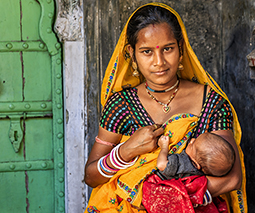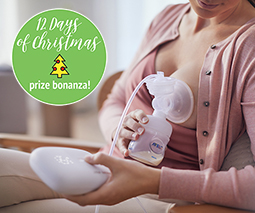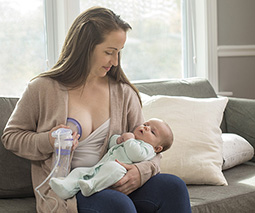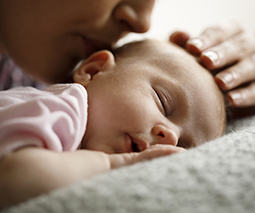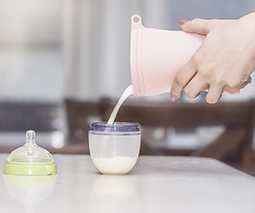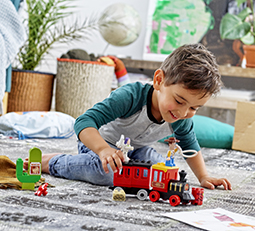The ins and outs of mastitis – what to do and how to avoid it
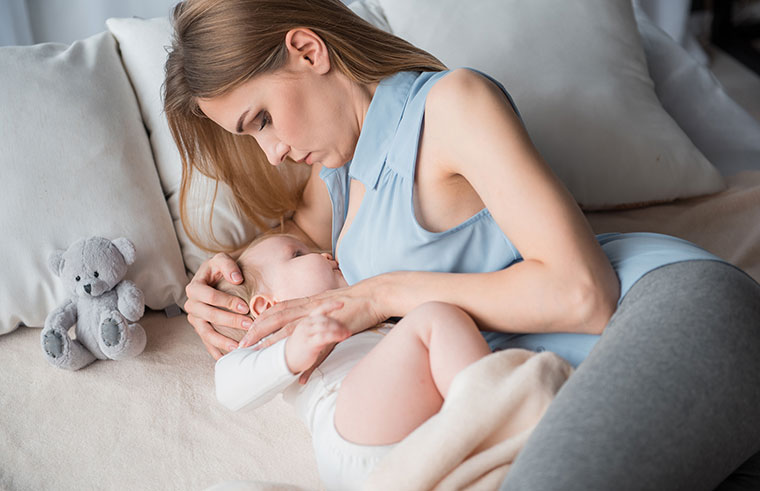
Louise Duurmsa has been an Australian Breastfeeding Association (ABA) consultant for over 20 years and is also an international board-certified lactation consultant. Recently Louise spoke to Babyology podcast Feed Play Love on everything we need to know about mastitis – what it is, how to treat it, and how to prevent it from even happening.
What is mastitis?
Mastitis is basically an inflammation of the breast tissue, which can be either infective or non-infective. But what’s the difference?
According to Louise, non-infective mastitis is when there is a blockage in the breast or something causes the milk to back up. “You get that inflammation, just like if you sprain your ankle, you get an inflammatory response. So, if you can clear that, often it won’t go on to be infective.
“Infective mastitis is when bacteria has gone into the breast, because maybe there’s a cracked nipple, and it will be full on bacterial infection straight away,’’ continues Louise. ”Other times it’s milk stasis, as we call it – the milk sitting there for a long time not being drained – and it can cause a bacterial infection if you don’t get onto it soon enough.”
Listen to Louise Duurmsa on Feed Play Love:
How does it feel?
According to Louise, either form of mastitis will make you feel terribly sick with chills, sweats and flu-like symptoms, as it’s an inflammation that your body is trying to fight.
“It’s really painful,” says Louise. ”You feel like you’ve got a bad dose of the flu. Sometimes it comes on very suddenly and you feel really terrible.”
What should I do?
Louise suggests first working out if there’s a blockage, and then attempting to clear it. A blockage will quite often feel like a lump inside your nipple. “Try to empty the breast frequently and sometimes if you do that, it will just settle down,” she says.
Another good tip if you do have a lump, is to get in the shower and massage your breast. “Use the flats of your fingers and maybe some sort of oil and massage that towards the breast, without digging,” says Louise. “Massaging when you’re feeding is another really important way to do it, so getting the baby on that affected side first, when they’re sucking more vigorously, and massaging.”
Louise stresses the importance of continuing to breastfeed, as painful as it may be. “The absolute worst thing you can do when you’ve got mastitis is stop feeding,” she says. “Even if you want to wean, when you’ve got mastitis is not the time to do it because if that breast is not drained, you can go on and have a breast abscess which is really nasty.”
Pain relief can help, as can feeding frequently and using cold packs, such as a bag of peas or a cold wet nappy that moulds nicely to the shape of the breast. “Use cold in between feeds, and warmth just before a feed, to help the milk to flow,” says Louise.
If the situation doesn’t improve then Louise advises going to your GP. “What we say is if you’re doing all those things and it doesn’t improve, then you need to go to the doctor and get antibiotics,” she says. “Twelve hours is about the time we say you should leave it before seeking the next level of support.”
If you continue to get mastitis, then that is also the time to get some help. “A bout of mastitis can be a one-off,” says Louise. “But if you’re getting repeat mastitis, it’s important to really seek some advice about what may be causing it.”

Can I prevent mastitis?
Prevention is always the best option, especially with something as painful as mastitis and Louise advises checking your breasts for any lumps or damage to your nipples.
“If you’ve got damage to your nipples, seek help straight away because, just like any open wound, bacteria can get in,” she says. “And if you feel the symptoms coming on, rest can make a big difference. So, just saying, ‘Okay all bets are off, I’m having a rest this afternoon and I’m going to work on clearing this breast’.”
Louise advises not wearing a bra to bed and avoiding any clothing that digs or presses into your breast for a long period of time. “That can cause a blocked duct, which can go on and cause mastitis,’’ she says.
It’s also a good idea to avoid underwire bras when you’re breastfeeding, as it is throughout your pregnancy. “When you’re pregnant, you’ve got your milk making tissue [and] developing, and when you’re breastfeeding there’s lots of activity there,” says Louise. “Any underwires are going to put pressure on the breast, so not wearing underwire bras is really important.”
Help is not far away
Louise’s final piece of advice, should you have any mastitis symptoms, is to first give the Australian Breastfeeding Association helpline a call.
“The counsellors on the helpline are fantastic, and deal with these questions all the time,” says Louise. “We’ll be able to tell a mother exactly what to do to manage her situation, and if the counsellor feels like the mother needs to do more, [such as] see a doctor or see a lactation consultant, then they’ll suggest that.”
